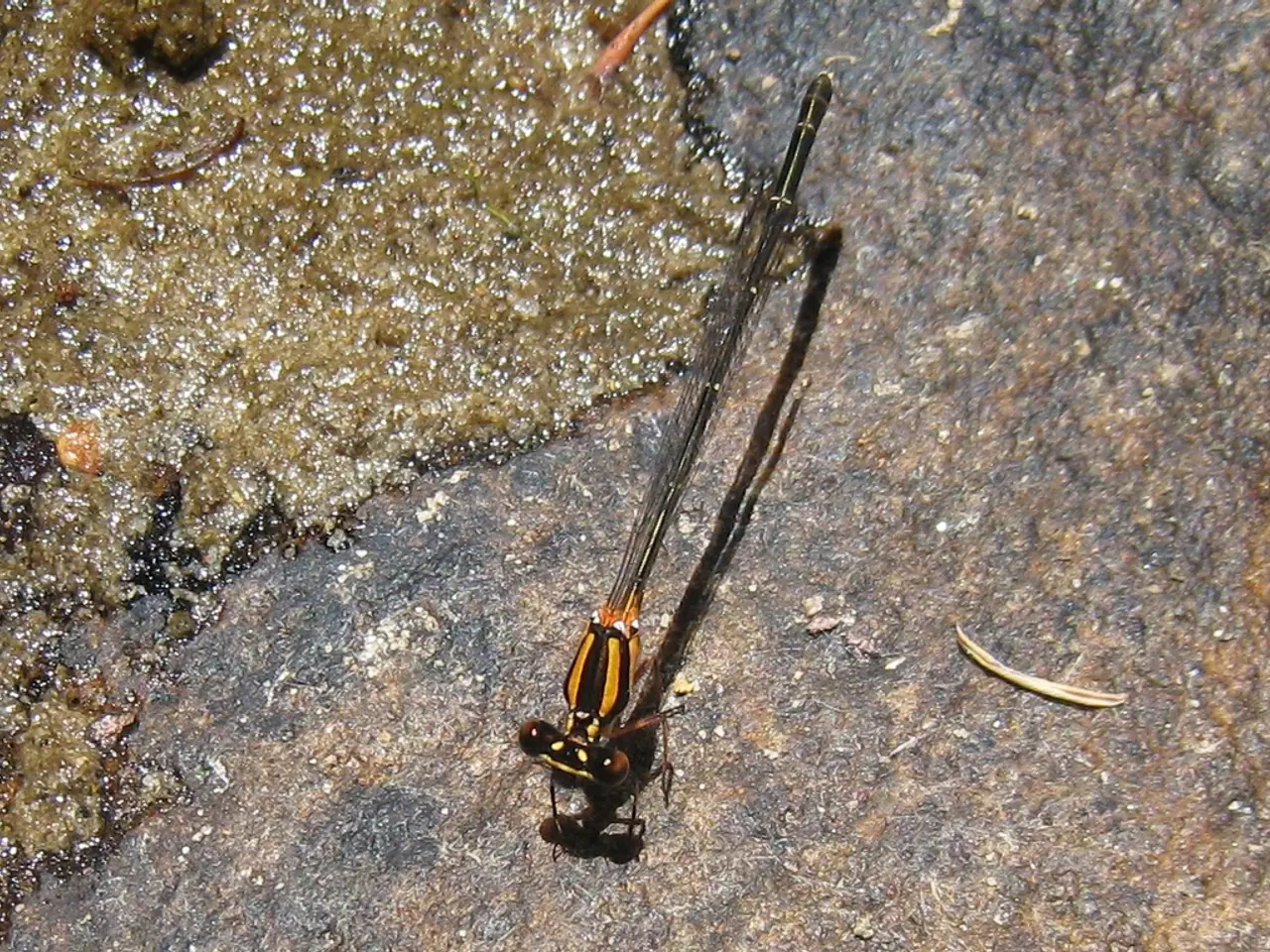Chikungunya, a spreading virus, is currently on the move in southern China.
In Foshan, China, authorities are battling an unprecedented outbreak of the mosquito-borne disease, Chikungunya. This appears to be the biggest chikungunya outbreak ever documented in China, with no previous instances of the virus being established on the mainland [1][3].
The disease, named after a word in the Makonde language meaning "that which bends up," is known to produce symptoms including fever, muscle pain, nausea, fatigue, and a rash [2]. While severe cases and deaths are rare, they mostly occur in babies or elderly people with underlying health conditions [4].
To combat the outbreak, Chinese authorities have implemented a multi-layered approach focusing on vector control and reducing human-mosquito contact. This includes aggressive mosquito control efforts such as drone-based fogging, adulticide spraying, and fines for non-compliance with mosquito control regulations [1][3].
Household-level inspections are also being carried out, with enforced use of insecticide-treated window screens and bed nets for confirmed cases, along with residual repellents applied in patient living spaces to protect during the infectious period [1][2]. Targeted elimination of mosquito breeding sites within at least 100 meters of residences, workplaces, and commonly visited places of confirmed cases is also underway [2].
Enhanced surveillance and diagnosis are crucial components of the response, with active case detection combined with differential screening to distinguish chikungunya from other febrile illnesses, and routine nucleic acid testing in healthcare facilities [2]. Legal enforcement is also being used to ensure community participation in mosquito control, with fines and mandatory compliance measures in place [1][3].
Additional strategies, such as the use of mosquito-eating fish as larvae control agents, have been deployed to reduce vector populations [3].
This outbreak, which has been worsened by unusually heavy rains and high temperatures this year, follows a global trend of increased chikungunya outbreaks since 2000, similar to other mosquito-transmitted diseases like dengue and Zika [5]. As of July, there have been about 240,000 cases of chikungunya, including 90 deaths in 16 countries [6]. The countries that reported the highest number of infections were Brazil, Bolivia, Argentina, and Peru [6].
While the majority of people who get chikungunya recover without needing medical attention after one to two weeks, in rare cases, the disease can cause debilitating joint pain that persists for months or even years [2]. The chikungunya virus was first identified in an outbreak in Tanzania in 1952 [7].
Given the scale and speed of this outbreak in Guangdong province, the response reflects an unprecedented and rapid effort aimed at interrupting local transmission. However, as there is no specific treatment or widely available vaccine for chikungunya, prevention remains the primary focus [3].
[1] https://www.who.int/news-room/articles-detail/china-reports-first-locally-transmitted-case-of-chikungunya-virus-infection [2] https://www.who.int/emergencies/diseases/novel-coronavirus-2019/chikungunya-virus [3] https://www.scmp.com/news/china/society/article/3126390/china-deploys-mosquito-eating-fish-combat-chikungunya-outbreak-foshan [4] https://www.who.int/news-room/fact-sheets/detail/chikungunya [5] https://www.who.int/publications/i/item/9789241514820 [6] https://www.who.int/news-room/fact-sheets/detail/chikungunya [7] https://www.who.int/news-room/q-a-detail/chikungunya-virus
- The outbreak of Chikungunya disease in Foshan, China, has highlighted the intricate link between climate change and health-and-wellness, as unusual weather patterns likely contributed to the increase in cases.
- As scientific studies show a correlation between warmer climates and the proliferation of mosquitoes that transmit chronic-diseases like Chikungunya, environmental-science has gained importance in the effort to combat such outbreaks.
- Given the potential impact of Chikungunya on mental-health, due to long-term joint pain and discomfort, it is essential to incorporate fitness-and-exercise programs into patient care plans for those affected, promoting a holistic approach to health-and-wellness.
- With Chikungunya outbreaks on the rise since 2000, space-and-astronomy may seem an unlikely connection, but as satellite data helps monitor climate change and predict extreme weather events that could escalate such outbreaks, these two seemingly unrelated fields have a role to play.
- While traditional medical-conditions treatments focus on addressing the symptoms and complications caused by Chikungunya, efforts should be made to invest in the research and development of a vaccine, further advancing the field of science and potentially saving lives in the future.




